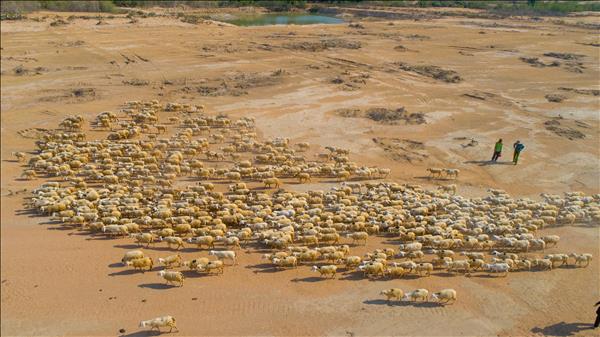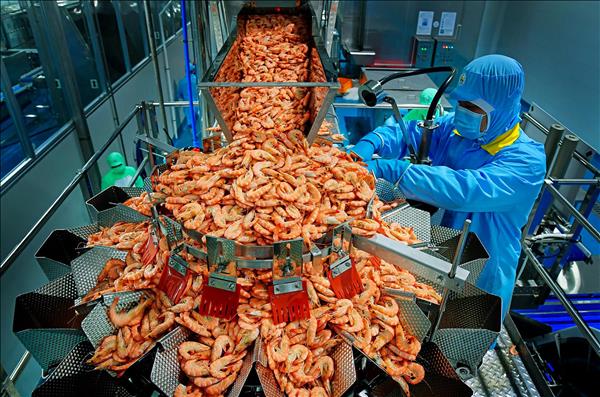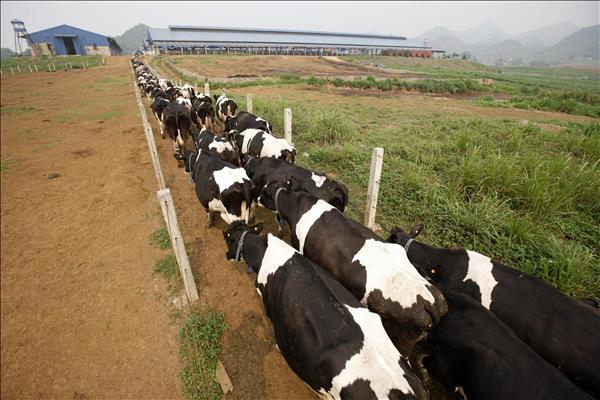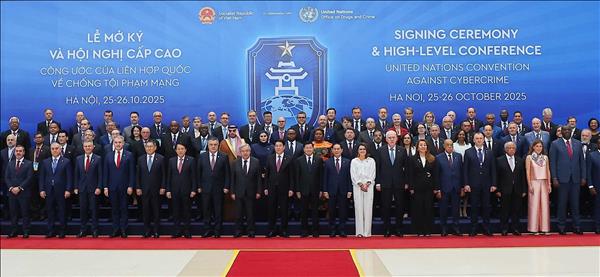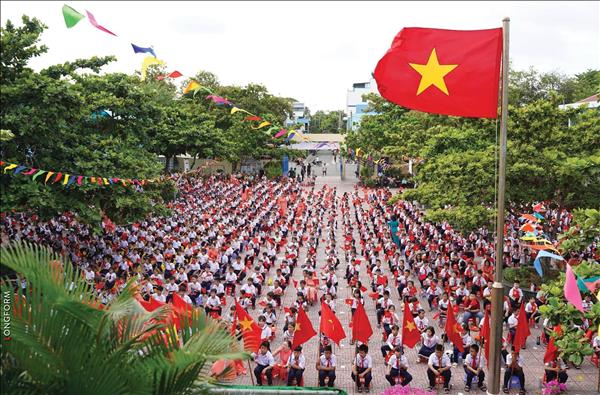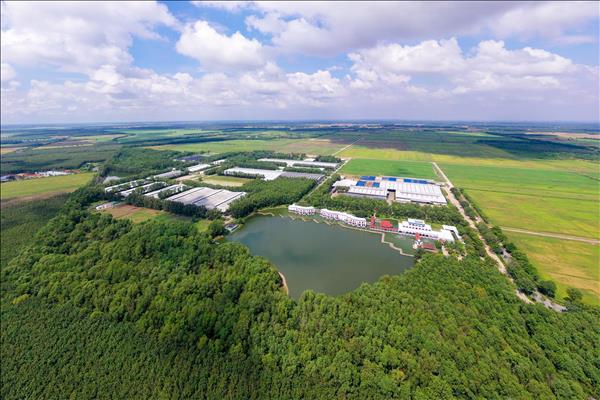By now, over 120 million COVID-19 cases and more than 2.6 million fatalities have been recorded in 221 countries and territories around the world. The pandemic has pushed the global economy into serious recession.
Vietnam has so far gone through three stages of infections, with the first from January 23, 2020, the second from late July 2020, and the third from January 25, 2021.
The Vietnamese Government has issued a number of policies to help businesses and people gradually overcome the difficulties brought about by the pandemic. The country has been a highlight in fulfilling the twin goals of fighting the pandemic and restoring socio-economic development.
In the first stage, the Government directed the adoption of early and drastic measures at an earlier time and stronger level than those recommended by the WHO. From the outset, it deployed the military force to the task of monitoring concentrated quarantining and controlling cross-border movement in border areas. Vietnam also conducted flights bringing citizens home and foreign investors, experts, and skilled workers to the country for employment.
In the second stage, response measures were taken quickly, drastically, and synchronously. All localities rebooted prevention and control systems so that pandemic “hotspots” were quickly isolated and wiped out.
With the spread of new COVID-19 variants in the third stage, the Ministry of Health led the effective carrying out of rapid tracing and isolation, collecting samples for testing on a large scale and narrowing the scale of lockdown to mitigate impacts on social and economic life.
The pandemic has so far been brought under control in the country.
With the motto “Fighting the pandemic like fighting the enemy”, Vietnam has worked closely with international organisations and countries worldwide to share information and identify strong but rational measures, which were welcomed by the international community.
As of late March 23, the country had reported 2,576 cases of infection, 1,601 of which were locally transmitted. Some 2,246 have recovered while 35 have died.
Thanks to timely and sound direction from the Government, the National Steering Committee for COVID-19 Prevention and Control, the Ministry of Health, other ministries, agencies, and localities, together with public unity, Vietnam successfully controlled its COVID-19 outbreaks at a relatively low cost.
Amid new developments of the pandemic, the National Steering Committee and the Health Ministry have issued new strategies.
In compliance with the Government resolution on the purchase and use of COVID-19 vaccines, the Health Ministry quickly bought vaccines and provided vaccinations to citizens.
Apart from imported vaccines, the Health Ministry is also stepping up the research and development of home-made vaccines. Nanocovax developed by the Nanogen company was put into the second stage of clinical human trials on February 26, while human trials of Covivac from the Institute of Vaccines and Medical Biologicals (IVAC) began on March 15. Made-in-Vietnam vaccines are scheduled to come into use next year.
Vietnam has also been a responsible member of the international community via providing medical supplies to affected countries.
Ministries, agencies, and localities are continuing to strengthen leadership and raising a sense of responsibility among heads of units in the effort. Top priority is given to pandemic control, but thorough consideration of prevention and control measures must be made to mitigate the socio-economic and human impact.
The essential but most popular and easiest measures continue to be undertaken to prevent infections in the community while strict monitoring is conducted to ensure the safety of high-risk groups in the community.
Entries into the country continue to be closely controlled, especially high-skilled workers, to prevent infections from external sources. Thorough preparations have also been made to gradually resume international flights to facilitate trade.
Ministries, agencies, and localities are also working to prevent disruptions to economic activities, especially in affected localities, facilitating international trade in the “new normal”, attracting investment from major partners, and creating the conditions to welcome investors, experts, and corporate executives to Vietnam for diplomatic and official purposes./.
Vietnam has so far gone through three stages of infections, with the first from January 23, 2020, the second from late July 2020, and the third from January 25, 2021.
The Vietnamese Government has issued a number of policies to help businesses and people gradually overcome the difficulties brought about by the pandemic. The country has been a highlight in fulfilling the twin goals of fighting the pandemic and restoring socio-economic development.
In the first stage, the Government directed the adoption of early and drastic measures at an earlier time and stronger level than those recommended by the WHO. From the outset, it deployed the military force to the task of monitoring concentrated quarantining and controlling cross-border movement in border areas. Vietnam also conducted flights bringing citizens home and foreign investors, experts, and skilled workers to the country for employment.
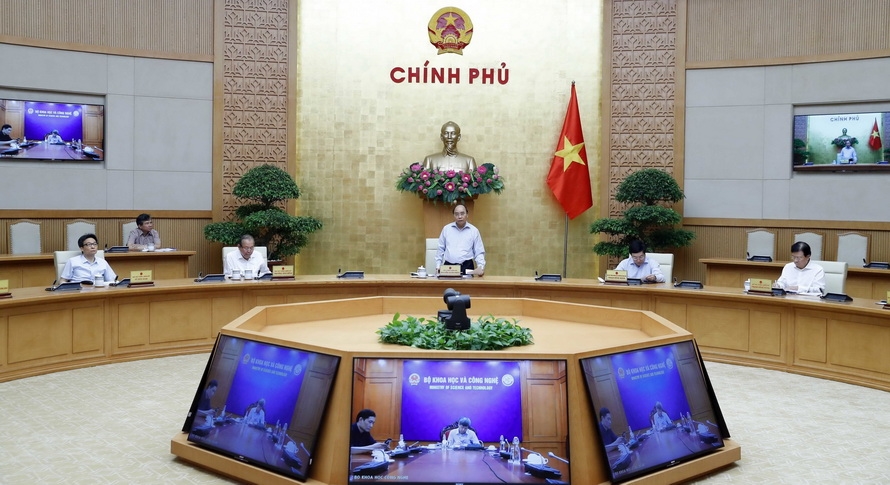
Prime Minister Nguyen Xuan Phuc chaired a meeting on COVID-19 responses on May 15, 2020. Photo: Thong Nhat/VNA
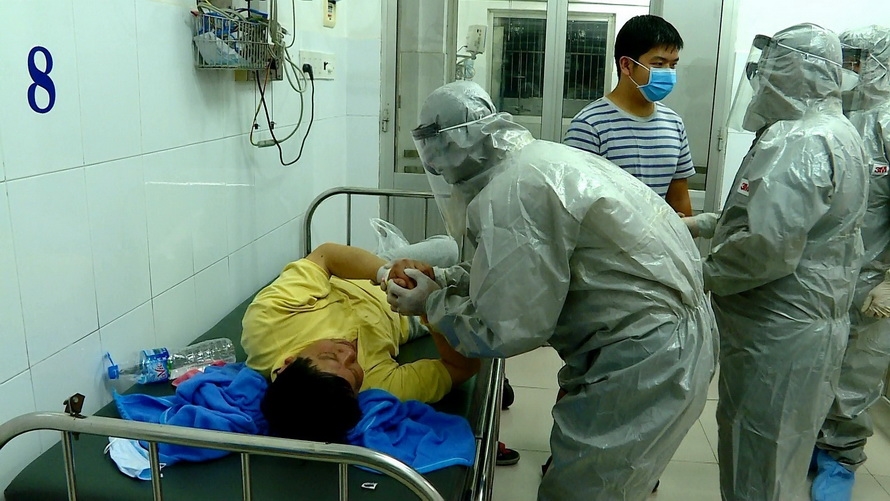
Doctors of Cho Ray hospital checked the situation of two COVID-19 patients from China who are father and son in January, 2020. The father travelled to Vietnam from China's Wuhan. Photo: Thanh Chung/VNA
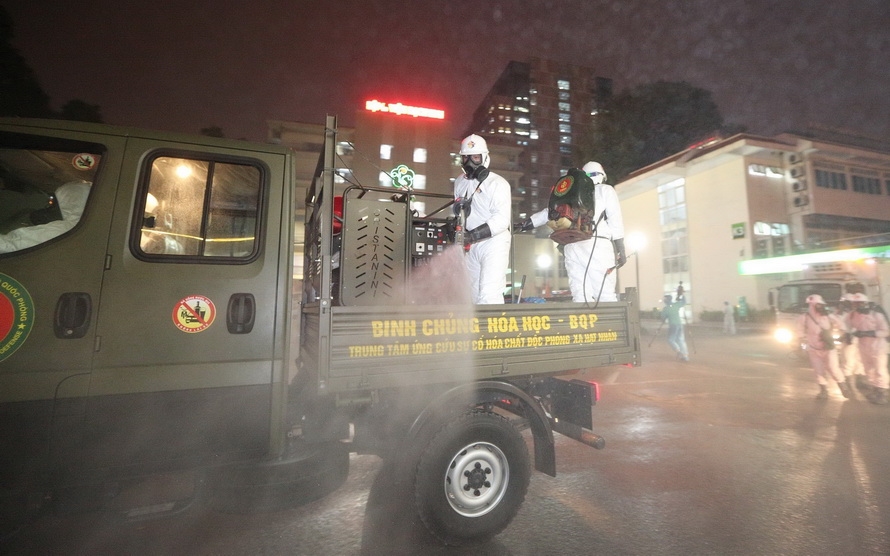 Soldiers from the Vietnam Army’s chemical division disinfect Hanoi’s Bach Mai hospital. Photo: Duong Giang/VNA 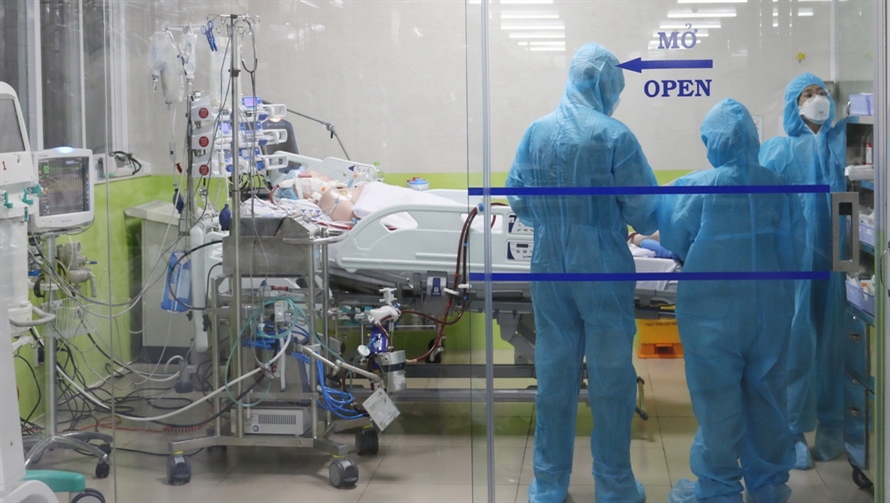 A 43-year-old British pilot named Stephen Cameron, also known as Vietnam's COVID-19 patient No. 91, was on a ventilator and life support machine at Ho Chi Minh City's Hospital of Tropical Diseases. Photo: VNA 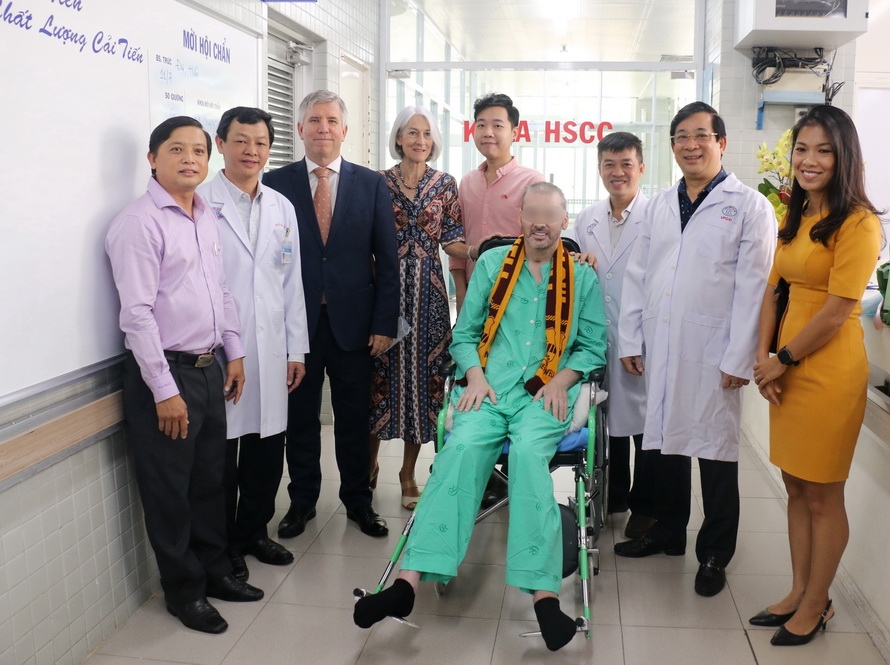 British pilot Stephen Cameron leaves Vietnam hospital after four-month battle with COVID-19. Photo: Dinh Hang/VNA 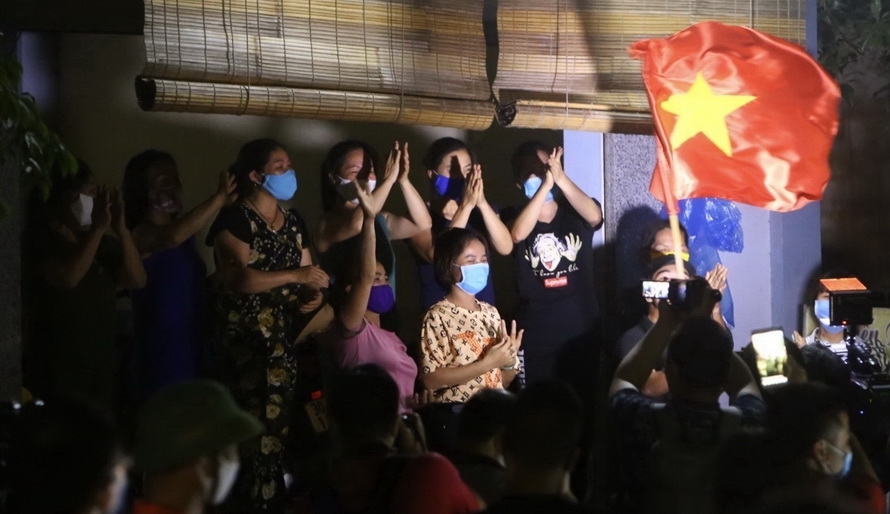 Hanoi officially removed blockade from Tren hamlet in Dong Cuu hillage, Dung Tien commune in Hanoi’s outlying district of Thuong Tin on May 14, after 28 days of isolation. Photo: Minh Quyet/VNA |
In the second stage, response measures were taken quickly, drastically, and synchronously. All localities rebooted prevention and control systems so that pandemic “hotspots” were quickly isolated and wiped out.
With the spread of new COVID-19 variants in the third stage, the Ministry of Health led the effective carrying out of rapid tracing and isolation, collecting samples for testing on a large scale and narrowing the scale of lockdown to mitigate impacts on social and economic life.
The pandemic has so far been brought under control in the country.
With the motto “Fighting the pandemic like fighting the enemy”, Vietnam has worked closely with international organisations and countries worldwide to share information and identify strong but rational measures, which were welcomed by the international community.
As of late March 23, the country had reported 2,576 cases of infection, 1,601 of which were locally transmitted. Some 2,246 have recovered while 35 have died.
Thanks to timely and sound direction from the Government, the National Steering Committee for COVID-19 Prevention and Control, the Ministry of Health, other ministries, agencies, and localities, together with public unity, Vietnam successfully controlled its COVID-19 outbreaks at a relatively low cost.
Amid new developments of the pandemic, the National Steering Committee and the Health Ministry have issued new strategies.
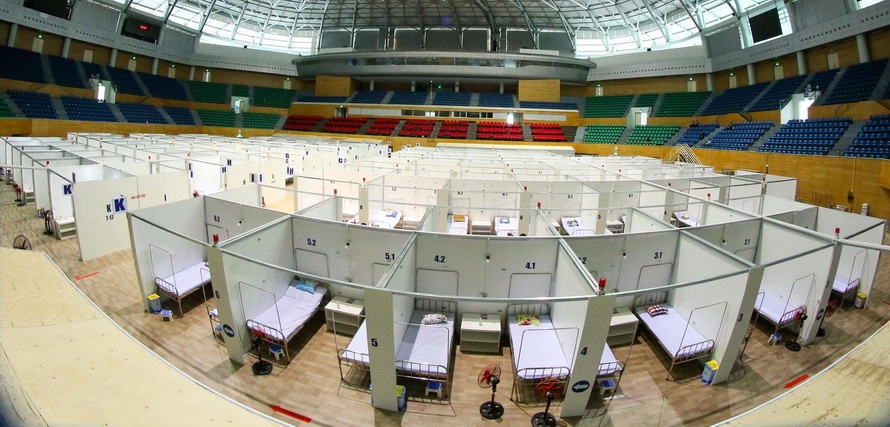 The Tien Son field hospital was built in 72 hours in early August, 2020 in preparation for a large number of COVID-19 patients in Da Nang. Photo: Tran Le Lam/VNA 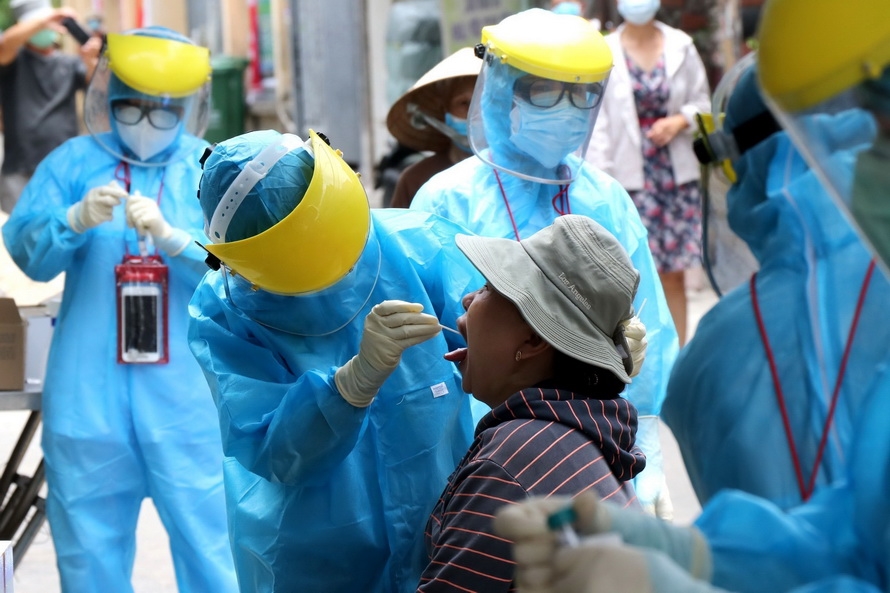 Taking specimens for COVID-19 testing in Son Tra, Da Nang in August 2020. Photo: Quoc Dung/VNA 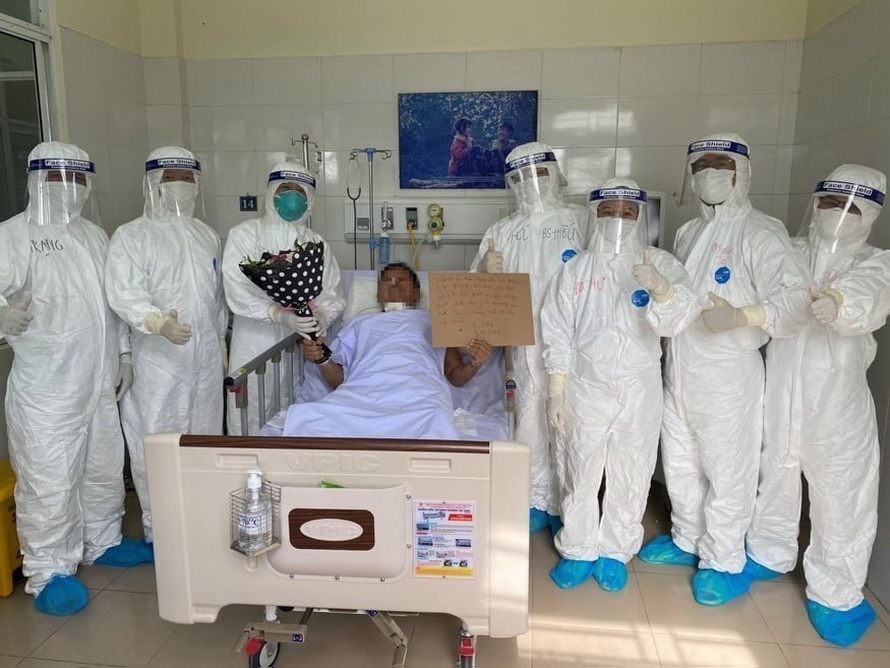 COVID-19 patient 582 expressed his gratitude to health workers of Da Nang Lung Hospital on August 16, 2020. Photo: VNA 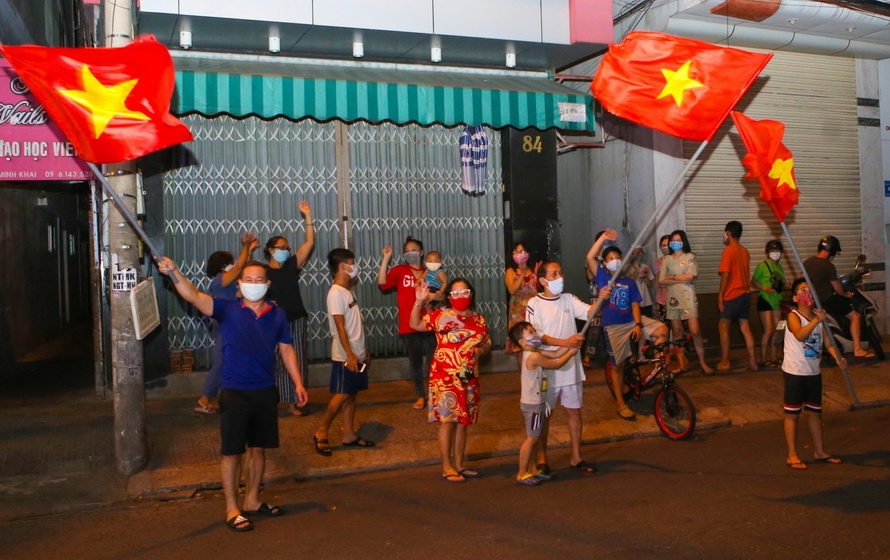 Locals in Da Nang are happy when they finish their 14-day lockdown. Photo: Tran Le Lam/VNA |
In compliance with the Government resolution on the purchase and use of COVID-19 vaccines, the Health Ministry quickly bought vaccines and provided vaccinations to citizens.
Apart from imported vaccines, the Health Ministry is also stepping up the research and development of home-made vaccines. Nanocovax developed by the Nanogen company was put into the second stage of clinical human trials on February 26, while human trials of Covivac from the Institute of Vaccines and Medical Biologicals (IVAC) began on March 15. Made-in-Vietnam vaccines are scheduled to come into use next year.
Vietnam has also been a responsible member of the international community via providing medical supplies to affected countries.
Ministries, agencies, and localities are continuing to strengthen leadership and raising a sense of responsibility among heads of units in the effort. Top priority is given to pandemic control, but thorough consideration of prevention and control measures must be made to mitigate the socio-economic and human impact.
The essential but most popular and easiest measures continue to be undertaken to prevent infections in the community while strict monitoring is conducted to ensure the safety of high-risk groups in the community.
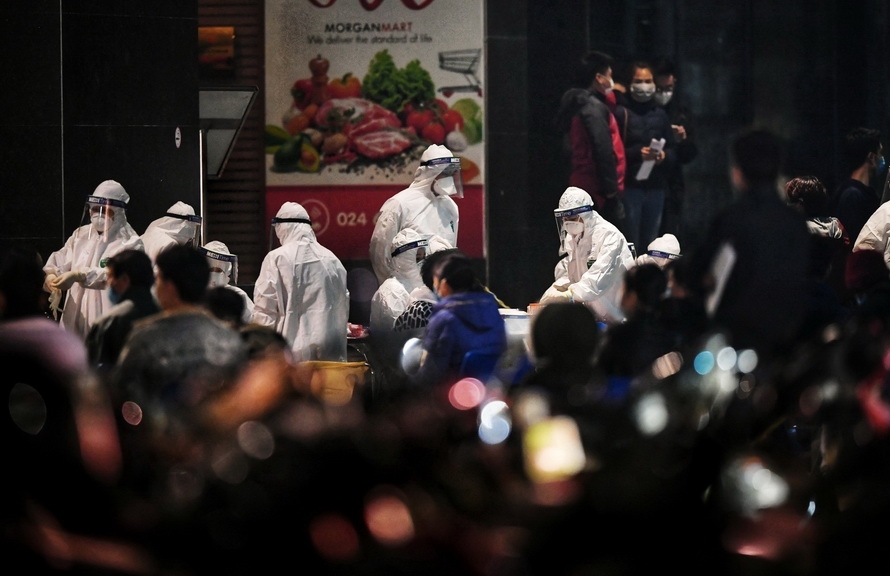 Health workers on February 4 took samples for COVID-19 testing at the Sky City Tower, No.88 Lang Ha street, Hanoi. Photo: Thanh Dat/VNA 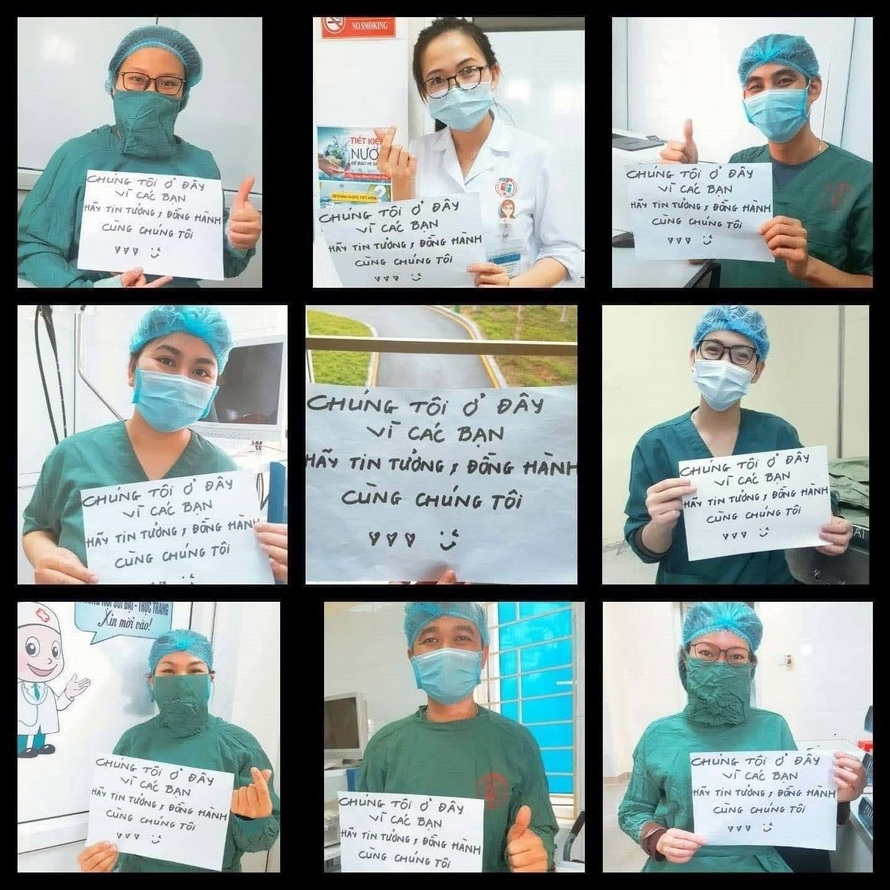 A message from health workers of the Vietnam – Sweden hospital in Uong Bi district, Quang Ninh before going to Dong Trieu town, Quang Ninh province to support the fight against COVID-19. Photo: Duc Hieu/VNA  More than 7,300 airport employees at Tan Son Nhat international airport have their samples taken for COVID-19 testing. Photo: VNA |
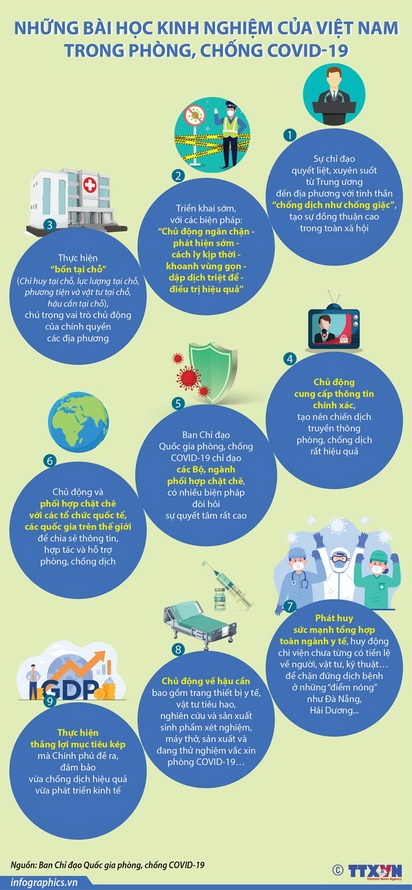 |
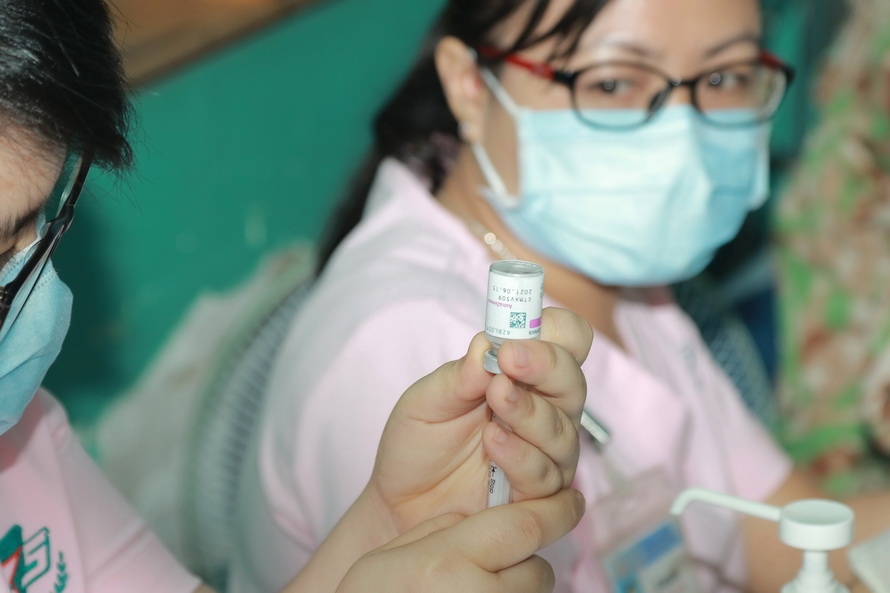 Staff members of the third Level-2 field hospital receive COVID-19 vaccinations before flying to South Sudan for a United Nations' peacekeeping mission. Photo: Dinh Hang/VNA 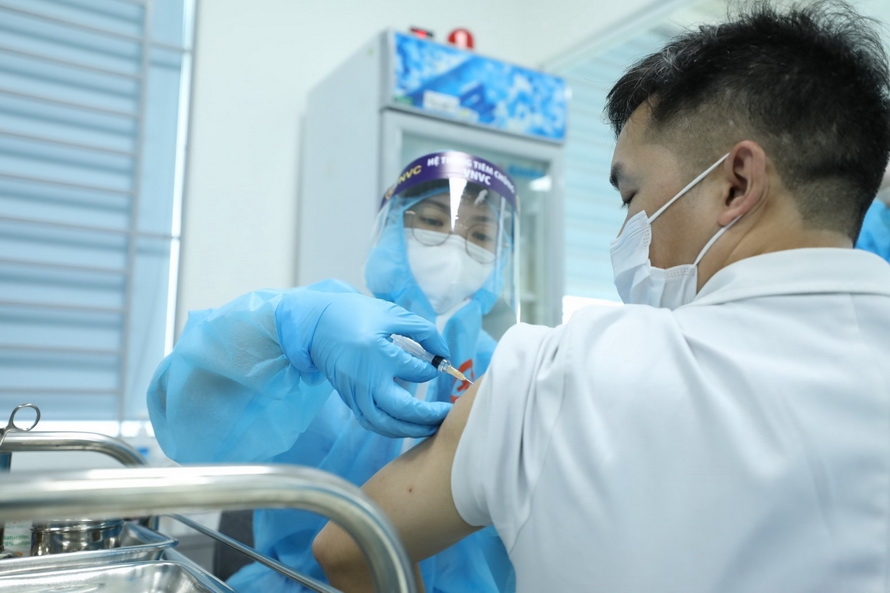 Vietnam officially started its COVID-19 vaccination on March 8, with the AstraZeneca vaccine to be given to medical workers in Hanoi, Ho Chi Minh City and the northern province of Hai Duong first. Photo: VNA 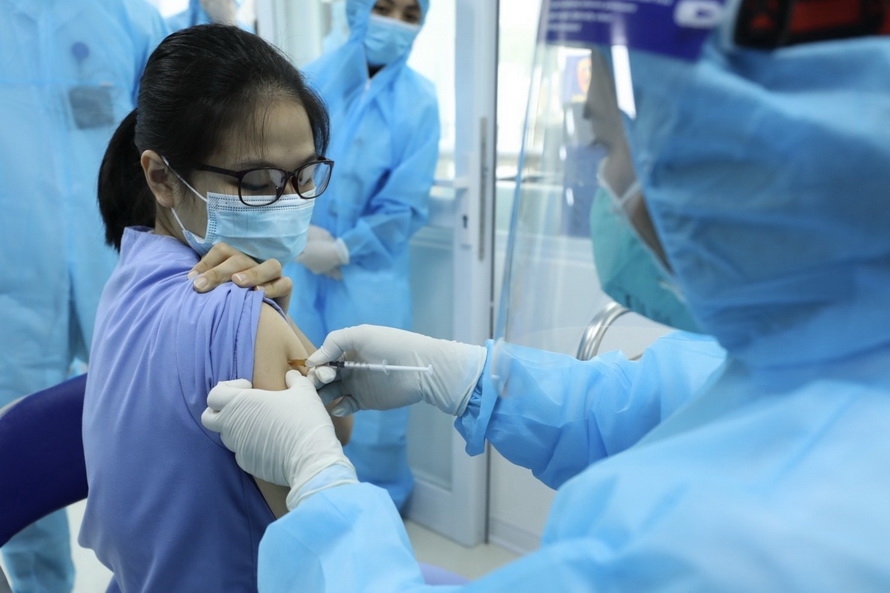 Six out of 120 volunteers have been injected with Vietnam’s second homegrown candidate vaccine COVIVAC, as human trials began at the Hanoi Medical University on March 15. Photo: Minh Quyet/VNA 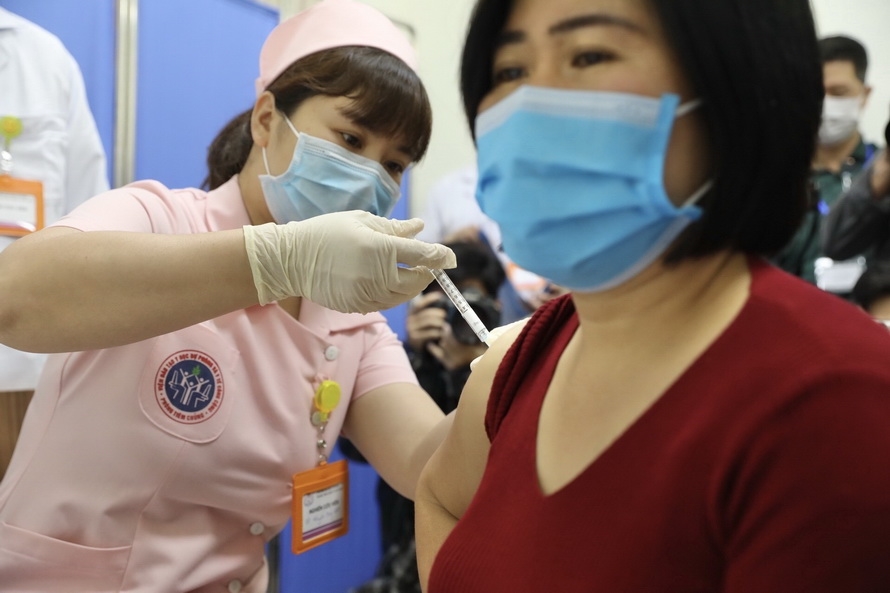 Injecting COVID-19 vaccine for medical workers at the National Hospital for Tropical Diseases No.2 in Hanoi. Photo: Minh Quyet/VNA 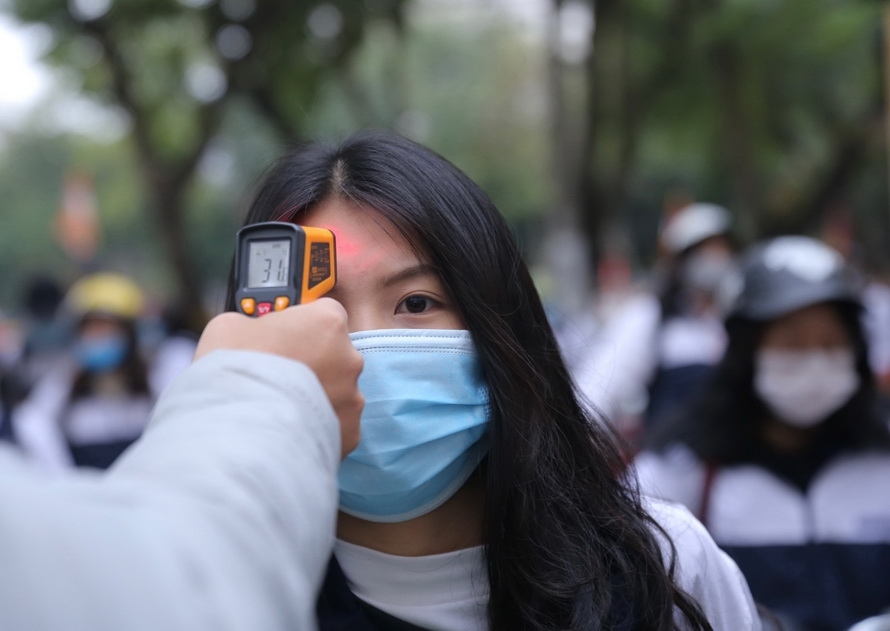 Hanoi ensures COVID-19 safety measures as students return to school after Lunar New Year (Tet) holiday and a few more days off to contain the spread of COVID-19. Photo: VNA 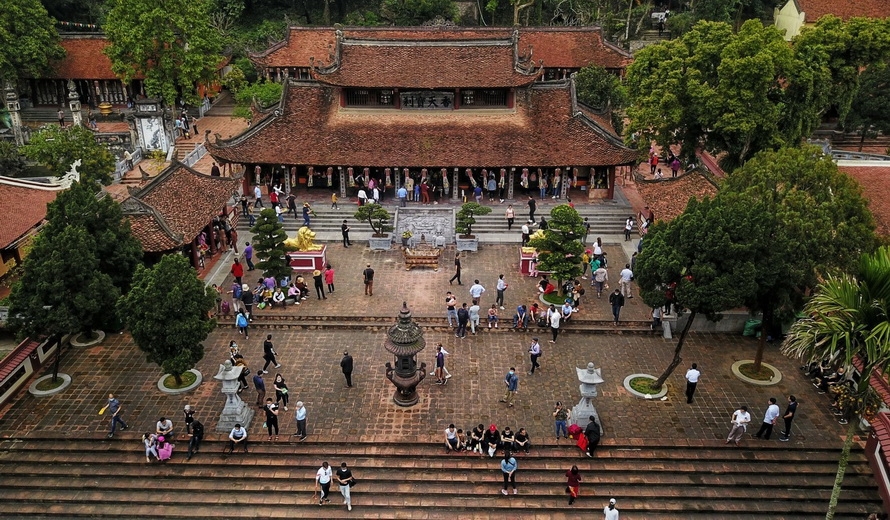 Huong pagoda festival official kicked off on March 13 with strict measures to prevent and control COVID-19. Photo: Thanh Dat/VNA |
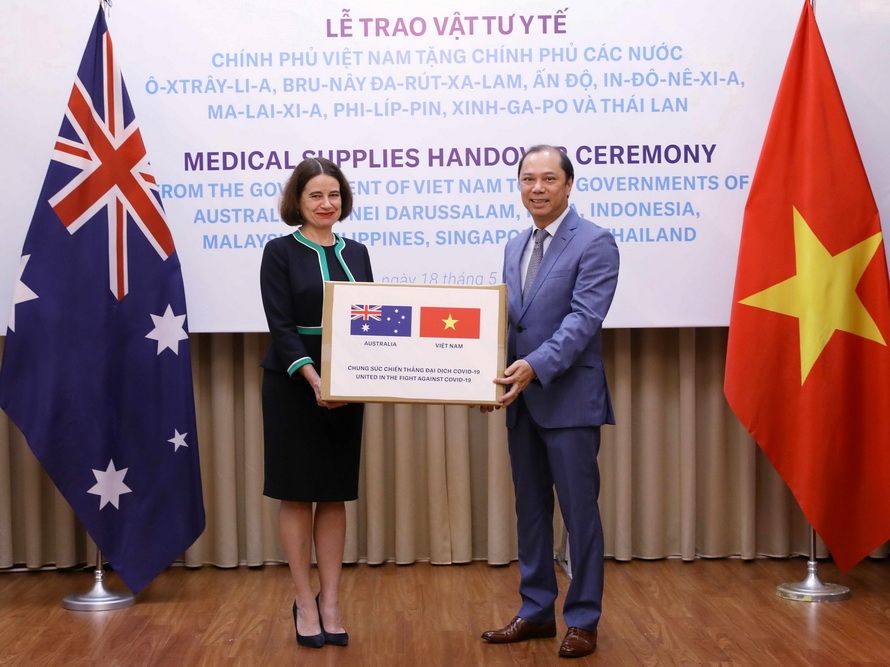 Deputy Minister of Foreign Affairs Nguyen Quoc Dung hands over medical supplies to the Australian Ambassadors to Vietnam to fight COVID-19. Photo: Van Diep/VNA |
Entries into the country continue to be closely controlled, especially high-skilled workers, to prevent infections from external sources. Thorough preparations have also been made to gradually resume international flights to facilitate trade.
Ministries, agencies, and localities are also working to prevent disruptions to economic activities, especially in affected localities, facilitating international trade in the “new normal”, attracting investment from major partners, and creating the conditions to welcome investors, experts, and corporate executives to Vietnam for diplomatic and official purposes./.
VNA/VNP

